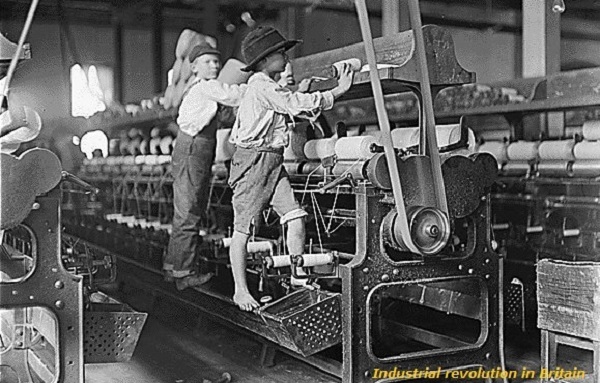British Economic Policies
From 1600 to 1757, the East India Company’s role in India, was that of a trading corporation, which brought goods or precious metals into India and exchanged them for Indian goods like textiles, spices, etc., which it sold abroad.
British’s profits came primarily from the sale of Indian goods abroad. It tried constantly to open new markets for Indian goods in Britain and other countries. Thereby, it increased the export of Indian manufactures and thus encouraged their production. This is the reason why the Indian rulers tolerated and even encouraged the establishment of the Company's factories in India.
By 1720, laws had been passed forbidding the wear or use of printed or dyed cotton cloth in the UK.
Other European countries, except Holland, also either prohibited the import of Indian cloth or imposed heavy import duties. In spite of these laws, however, Indian silk and cotton textiles still held their importance in foreign markets, until the middle of the 18th century when the English textile industry began to develop on the basis of new and advance technology.
After the Battle of Plassey in 1757, the pattern of the Company's commercial relations with India underwent a qualitative change. Now the Company could use its political control over Bengal to push its Indian trade.
The Company used its political power to dictate terms to the weavers of Bengal who were forced to sell their products at a cheaper and dictated price, even at a loss. Moreover, their labor was no longer free. Many of them were compelled to work for the Company for low wages and were forbidden to work for Indian merchants.
The British Company eliminated its rival traders, both Indian and foreign, and prevented them from offering higher wages or pries to the Bengal handicraftsmen.
The servants of the Company monopolized the sale of raw cotton and made the Bengal weaver pay exorbitant prices for it. Thus, the weaver lost by both ways, as a buyer as well as a seller. On the contrary, Indian textiles had to pay heavy duties on catering England.
The Industrial Revolution (in Britain)
The real blow on Indian handicrafts fell after 1813 when they lost not only their foreign markets but, what was of much greater importance, their market in India itself.
Between the second half of the 18th century and the first few decades of the 19th century, Britain underwent profound social and economic transformation. British industry developed and expanded rapidly on the basis of modem machines, the factory system, and capitalism.

The Industrial Revolution transformed British society in a fundamental manner. It led to rapid economic development, which is the foundation of today's high standard of living in Britain as well as in Europe, the Soviet Union, the U.S.A., Canada, Australia, and Japan.
Britain became increasingly urbanized as a result of the Industrial Revolution. More and more men began to live in factory towns.
In 1750, Britain had only two cities with more than 50,000 inhabitants; in 1851, their number was 29.
Two entirely new classes of society were born i.e.
The industrial capitalists, who owned the factories, and
The workers who hired out as the labors on daily wages.
While the industrial capitalist class developed rapidly, enjoying unprecedented prosperity, the workers — the laboring poor in the beginning reaped a harvest of sorrow.
Instead of exporting manufactured goods, India was now forced to export raw materials like raw cotton and raw silk, which British industries needed urgently, or plantation products like indigo and tea, or food grains, which were in short supply in Britain.
The British also promoted the sale of Indian opium in China even though the Chinese put a ban on it because of its poisonous and other harmful qualities. But the trade yielded large profits to British merchants and fat revenues to the Company-cannoned administration of India.
Interestingly enough, the import of opium into Britain was strictly banned. Thus, the commercial policy of the East India Company after 1913 was guided by the needs of British industry. Its main aim was to transform India into a consumer of British manufactures and a supplier of raw materials.
The Drain of Wealth
The British exported to Britain part of India's wealth and resources for which India got no adequate economic or material return.
This 'Economic Drain' was peculiar to British rule. Even the worst of previous Indian governments had spent the revenue they extracted from the people inside the country.
The British, consequently, spent a large part of the taxes and income they derived from Indian people not in India, but in their home country.
The drain of wealth from Bengal began in 1757 when the Company's servants began to carry home immense fortunes extorted from Indian rulers, zamindars, merchants, and from other common people.
They sent home nearly £ 6 million between 1758 and 1765. This amount was more than four times the total land revenue collection of the Nawab of Bengal in 1765.
In 1765, the Company acquired the dewani of Bengal and thus gained control over its revenues.
The Company, even more than its servants, soon directly organized the drain. It began to purchase Indian goods out of the revenue of Bengal and to export them. These purchases were known as 'investments' Thus, through 'Investments', Bengal's revenue was sent to England.



